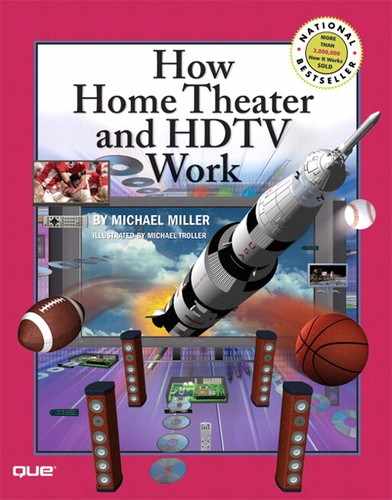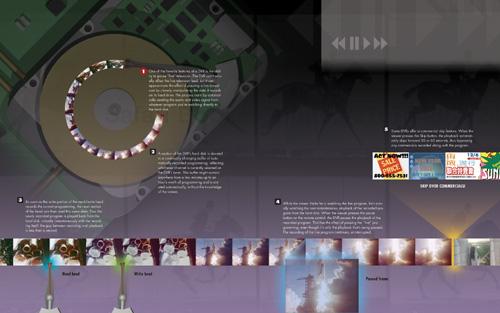
A digital video recorder, or DVR, is like a VCR without the tape. Instead, programming is recorded on a hard disk, like the kind used in personal computers. The hard disk records programs digitally, which means that the recording can be identical to the original, with no loss in audio or video quality.
Hard disk recording offers several other advantages to recording on tape. One big benefit is instant access to any point in the recording. With a videocassette, which offers sequential access only, you have to fast forward and rewind the tape to get to the exact point you want; with hard disk recording’s random access, moving to any specified point in the recording is instantaneous, just like cueing up a new song on a CD. The hard disk also enables crystal-clear special effects, such as freeze frame, slow motion, fast forward, and rewind—all with the same picture quality as the original program.
DVRs also let you pause and rewind “live” programming. The word live is in quotation marks because you can’t really pause programming as it arrives over the airwaves or via cable. What you can do, however, is immediately record that live program to the DVR’s hard disk, and then watch the playback of the program from the hard disk instead of from your television’s tuner. Since the DVR uses separate write and read heads to put information on and read information from the hard disk, the playback of the recorded material only lags a millisecond behind the original broadcast. Then, when you hit the pause button, you’re pausing the playback from the hard disk. It’s like you’re pausing the live broadcast,although you really aren’t.
Recording television programming is a lot easier on a DVR than on a VCR, thanks to the DVR’s electronic program guide (EPG). The EPG is a listing of upcoming programming across all available channels, up to a week or more in advance. Recording a program is as easy as locating and selecting the program in the EPG. Most EPGs also enable you to search for specific shows and opt to record all broadcasts of your favorite shows with the click of a single button. It’s a lot easier than setting the timer on a VCR!
The most popular DVRs use the TiVo EPG. (In fact, TiVo is so popular that the brand name has become a verb, as in “I’m going to TiVo that program tonight.”) But TiVo isn’t the only type of DVR available today. Many consumer electronics companies manufacture either freestanding DVRs or devices that incorporate both hard disk and DVD recorders. In addition, most cable companies offer set top boxes with built-in hard disk recorders, as do the two major direct broadcast satellite systems. There are even some television manufacturers that are starting to include hard disk recorders in their big-screen television sets! It’s a great technology, and very popular with television lovers everywhere.



